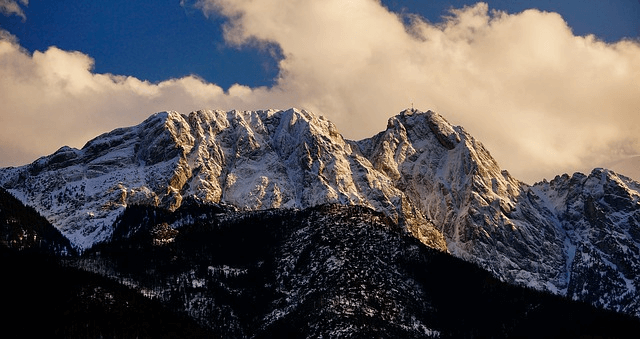
A park for humans, a home for animals
Take Tatry National Park: the only high mountain national park in Poland, which is visited by almost 3 million tourists every year. Although it spans over 21 thousand hectares, it has a relatively dense network of tourist trails (for every 80 hectares, there is 1 kilometre of trail), frequented by people everyday in the summer season. This does not remain without influence on the wildlife of this uniquely valuable corner of our country.
Constant human presence and mixing of tourist trails with animal paths constitute a significant stress factor for the wildlife. Although, animals have not abandoned their habitats yet, they could not exist in these uncommon circumstances, if their behaviour had not changed: they got used to having people around the trails and other areas available for tourists. In those places, the animals allow for a shortening of their escape distance, that is they let us approach them. However, a wild animal grazing in the vicinity of a trail is only seemingly tranquil. It is on constant guard, observing the tourists, ready to run immediately, if a human would, e.g. leave the path to take a better picture. Therefore, if you manage to spot an indigenous inhabitant of Tatras, do not get carried away by emotions, stay calm and quiet, say on the trail, and you will be able to admire it for a while.
When walking in Tatras, you must have noticed that there are no litter bins on the trails. This does not a result from thriftiness of the environmental protection services. On the contrary – it is well grounded. Every litter bin, even if it was regularly emptied, is a source of tempting scents. Wild animals would learn fast that they can find remains of human food there, and get the food they need relatively easy. With time they would regularly visit these places and become more and more daring. First, they would only come under the cover of the night, then in daylight. If this is reinforced by the additional incentive of getting food directly from humans, the animals become gradually dependent on the “aid”. In consequence, they lose their fear of humans and when hungry, they might even become aggressive. This often happened in Tatra National Park it frequently involved human-bear interaction. This largest predator in Poland is also incredibly intelligent and it learns very fast, that is why one should not compromise in these situations.
Some bears still have a shortened distance of escape from humans, so one may encounter them close to a tourist trail. If this happens, you should remain clam, refrain from abrupt gestures, and if possible, allow the animal to go its own way, or back down slowly yourself.
The shortening of the distance of escape from humans does not always have to be a consequence of human negative influence on the environment. The history of tourism in Tatras knows many cases of lone hikers being attacked by excited stags or male chamois, who took them for potential rivals trespassing on their territory. In case of both of those species, such situations might happen between September and November, when the hyperactive males lose their natural discretion.
As a final note, let’s remember that you can only wonder around Tatra National Park form dawn till dusk. This way, you give the wildlife a bit of time for respite and regeneration before another crowded and busy day and in Tatra Mountains.
Wszystkie pola:
array(19) { ["key_words"]=> string(0) "" ["meta_title"]=> string(60) "A park for humans, a home for animal- visit polands , Poland" ["meta_desc"]=> string(0) "" ["watermark"]=> string(0) "" ["interesting_places"]=> string(40) "Visit Poland - Places To Visit In Poland" ["author"]=> string(14) "Łukasz Pęksa" ["latlng"]=> array(3) { ["address"]=> string(0) "" ["lat"]=> float(49.23165947198800296291665290482342243194580078125) ["lng"]=> float(19.845428466796999344978758017532527446746826171875) } ["highlight_search"]=> bool(false) ["is_news"]=> bool(false) ["is_home_page_title"]=> bool(false) ["is_poradnik"]=> bool(false) ["is_sprzet"]=> bool(false) ["is_outwear"]=> bool(false) ["use_video"]=> bool(false) ["video"]=> string(0) "" ["show_map"]=> bool(true) ["country"]=> string(3) "POL" ["meta_key"]=> string(0) "" ["home-visible"]=> bool(false) }key_words:
meta_title: A park for humans, a home for animal- visit polands , Poland
meta_keys:
meta_desc:
watermark:
interesting_places: Visit Poland - Places To Visit In Poland
author: Łukasz Pęksa
latlng: Array
highlight_search:
is_news:
is_home_page_title:
is_poradnik:
is_sprzet:
is_outwear:
use_video:
video:
show_map: 1
Pola do umieszczenia w nagłówku
meta_title: A park for humans, a home for animal- visit polands , Poland
meta_keys:
meta_desc:
Pola do umieszczenia w treści
watermark:
watermark:
author: Łukasz Pęksa
meta_desc:




